The origins of the town of Lampeter can be dated back to the building of the Norman castle of Pont Steffan, beside the River Teifi. The castle was destroyed in 1187 by Owain Gwynedd. Lampeter became a thriving market town in the following years, after being granted its charter in 1284, and has since become renowned for its University, St David’s College. The War Memorial at Lampeter was sculpted by the renowned Tenby Artist, Sir William Goscombe John, who also produced the Carmarthen County War Memorial, and the Royal Welch Fusiliers War Memorial at Wrexham. It was unveiled on 14 October 1921, by Major J. C. Harford, of Falcondale, whose son John fell during the War.
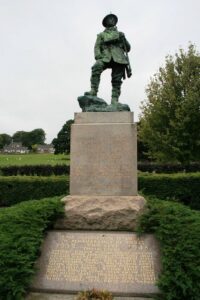
The Great War, 1914-1918
John Anelay, Squadron Quartermaster Sergeant, 4196, 9th Lancers. John was born in 1884, the son of John and Alice Anelay, of 6, Mary Street, Blackburn. Prior to the war he resided with his wife, Margaret Anelay, at Bridge Street, Lampeter. John was a regular soldier, and at the outbreak of war went to France with the 9th Lancers, landing on 15 August 1914. The Lancers were attached to the 2nd Cavalry Brigade, 1st Cavalry Division, and took part in the retreat from Mons to the Marne, before taking up positions at Ypres, fighting at the First Battle of Ypres that year. The Lancers were dismounted early in 1915 to serve as infantry, and fought as such during the Second Battle of Ypres from 22 April 1915. John was killed in action during the battle on 13 May 1915. He was 36 years old, and is commemorated on the Ypres (Menin Gate) Memorial, Belgium.
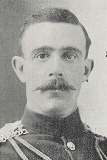
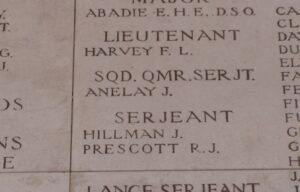
Harold Francis Conroy, Private, 1549, Royal Army Medical Corps. Harold was born in 1893, the son of William James Conroy and Margaretta Conroy (nee Lloyd), of Lampeter. He served with the 2nd Welsh Field Ambulance, Royal Army Medical Corps. Harold remained on home service with the unit, which was a reserve unit for the 53rd (Welsh) Division. He became ill, and died in hospital at Cardiff on 22 August 1915, aged 22. Harold’s place of burial is not presently known, so he is commemorated on the Brookwood Memorial, Surrey. Harold is not commemorated on the Lampeter Memorial.
David Davies, Private, 3603, Welsh Guards. David was born at Lampeter, and had enlisted into the Welsh Guards. The Welsh Guards had been formed after the Royal Warrant of 26 February 1915, and moved to France that year. David doesn’t look to have served overseas, but became ill and died at Lampeter on 11 February 1917. He was 24 years old, and is buried at Llanfair Clydogau (St. Mary) Churchyard. David does not appear to be commemorated locally.
David Davies, Private, 53958, Royal Welsh Fusiliers. David was born in 1887, and prior to the war resided with his wife, Elizabeth A. Davies, at Lampeter. David enlisted into the Welsh Regiment, but was posted to France during 1916 attached to the 1st Battalion, Royal Welsh Fusiliers. The battalion was on the Somme, attached to 22 Brigade, 7th Division, by the time that David reached it, and was taking part in the attacks on High Wood. The Division then took part in the Battle of Delville Wood, and the Battle of Guillemont, before spending the winter on the Ancre. In March 1917 they followed up the German Retreat to the Hindenburg Line, and took part in Flanking Operations Round Bullecourt. David was killed at Bullecourt on 4 May 1917. He was 39 years old, and is commemorated on the Arras Memorial, France. David is not commemorated on the Lampeter Memorial.
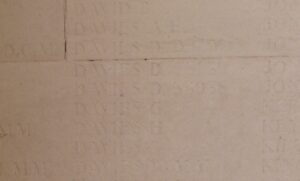
David John Reginald Davies, Sergeant, 1301, Australian Imperial Force. David was the son of David Rees Griffiths and Jane Griffiths of Goitre-Isaf, Derry Ormond. He entered St. David’s College from Lampeter College School in October 1909, and emigrated to Australia in 1911 to continue his education, becoming a school teacher. After the outbreak of war, David enlisted on 28 October 1914 at Liverpool, NSW into the 3rd Battalion, Australian Infantry. After undergoing basic training in Australia, David embarked as part of the 2nd Reinforcements for the 3rd Battalion aboard HMAT Seang Bee on 11 February 1915, and on 7 May 1915 was taken on strength by the battalion at Gallipoli, where it was attached to the 1st Brigade, 1st ANZAC Division, at Anzac Cove. He was in the trenches for a month when he became ill, and was hospitalised at Lemnos for a week, prior to rejoining the battalion, in time for the attack on Line Pine, David was shot in the thigh during the assault on Lone Pine on 8 August 1915. He was evacuated aboard the Hospital Ship SS Dunluce Castle, but died of his wounds at sea on route to Malta on 10 August 1915, aged 27. David was buried at sea, and so is commemorated on the Lone Pine Memorial, Gallipoli. He is named on several memorials as David John Rees Davies, but enlisted under the name David John Reginald Davis.
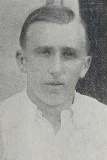
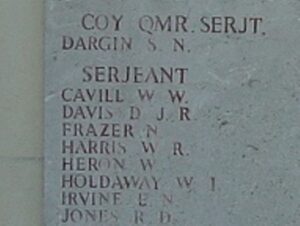
David Rees Hanlyn Davies, Private, 12687, Royal Welsh Fusiliers. David was the son of David Thomas Davies, Solicitor, and Jane L. Davies, of Eurfaen Hall, Lampeter. He worked as an insurance agent at Ruthin prior to the war, and lived with his wife, Mrs. Davies, at Bodawen, Gellyfor, Ruthin. David enlisted at Shotton into the 8th Battalion, Royal Welsh Fusiliers at the outbreak of war. The battalion was attached to 40 Brigade, 13th (Western) Division, and on 13 June 1915 sailed for Alexandria, moving to Mudros before being landed at Cape Helles, Gallipoli from 6 July 1915, relieving the 29th Division. They left and returned to Mudros at the end of the month, and the entire Division landed at ANZAC Cove between 3 and 5 August, 1915. David was wounded at the Battle of Sari Bair, and was evacuated to Mudros, where he died on 11 August 1915. He was 32 years old, and is buried at East Mudros Military Cemetery, Gallipoli.
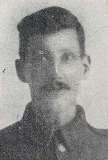

Jack Davies, Private, 533257, London Regiment. Jack was born at Lampeter. He resided at Porth prior to the war, and enlisted into the 15th Battalion (Civil Service Rifles), London Regiment, which was attached to 140 Brigade, 47th (2nd London) Division. The Division had been in France since March 1915, and Jack joined them at sometime in 1916, probably after the Somme Offensive. Early in 1917 the Division moved north to Belgium, and took part in the Battle of Messines, and then in November 1917 fought at the Battle of Cambrai. In March 1918 the Division were situated near St. Quentin, and faced the German Spring Offensive here on 21 March, fighting at the Battle of St Quentin, and then in the rearguard action at the First Battle of Bapaume. In August 1918 the British attacked on the Somme, and the Division fought in the Battle of Albert, and then at the Battle of Bapaume. Jack was killed in action on 5 September 1918, and is buried at Péronne Communal Cemetery Extension, France. Jack is not commemorated on the Lampeter Memorial.
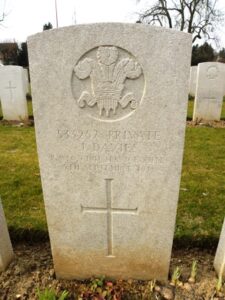
John Davies, Private, 12348, Gloucestershire Regiment. John was the son of Mrs. Davies, 1 Barleymow, Lampeter., and the brother of Mrs. D.L. Jenkins, the Institute, Lampeter. He enlisted at Cardiff into the army at the outbreak of war, and was posted to the 1st Battalion, Gloucestershire Regiment, which was attached to 3 Brigade, 1st Division, joining the battalion at Ypres on 3 December 1914. John took part in the Christmas Truce of 1914, and was with the battalion during the Battle of Aubers the following year. He was killed in action here on 9 May 1915, and is commemorated on the Le Touret Memorial, Richebourg L’Avoue, France.
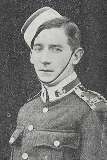
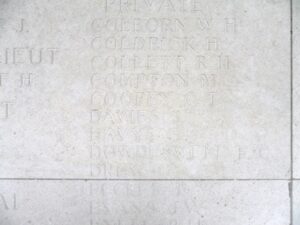
John Worthington Davies, Sapper, 66636, Royal Engineers. John was the son of Mr. and Mrs. Thomas Davies, of Cloth Hall, Lampeter. He was a Tailor prior to the war, and resided with his wife, Susannah Davies, at 13 Eskdale Street, Darlington. John enlisted into the Royal Engineers, and was posted to the 1st Reserve Battalion, Royal Engineers at Chatham. He died at Chatham Military Hospital on 7 December 1915, and is buried at Fort Pitt Military Cemetery, Kent.
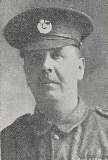
Nathaniel Davies, Private, 20927, Welsh Regiment. Nathaniel was the son of Edward and Catherine Davies, of 2, Market Street, Lampeter. He enlisted at Ammanford into the 15th Battalion, Welsh Regiment, which was known as the Carmarthen Pals, and was attached to 114 Brigade, 38th (Welsh) Division. The Division crossed to France in December 1915 and took the line near Fleurbaix, where it trained in trench warfare. On 9 March 1916 the 15th Welsh were in the line at Grenadier Street, Cuinchy, when the Germans exploded two huge mines underneath part of their line, and then bombarded the Welsh trenches. Nathaniel was killed during the ensuing barrage. He was 19 years old, and is buried at Guards Cemetery, Windy Corner, Cuinchy, France.
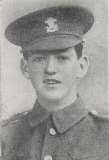
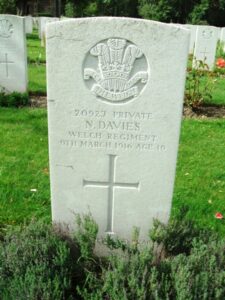
Thomas Davies, Private, 34490, Welsh Regiment. Thomas was born in 1897, the son of Evan and Jane Davies, of Frondeg, Llanwnen. He enlisted at Aberystwyth into the army, and landed in France on 18 July 1915, probably with the 9th Welsh. Thomas was later posted to the 18th Battalion, Welsh Regiment, which was attached to 119 Brigade, 40th (Bantam) Division. The Division moved to France during June 1916, and moved to the front near Loos. Late in 1916 they moved south to the Somme, and fought at the Battle of the Ancre, and remained in the area over the winter. In March 1917 the Germans withdrew to their shortened line, called the Hindenburg Line, and the 40th Division was one of the Divisions that followed the withdrawal. Later in the year they took part in the Battle of Cambrai, playing an important role in the attack on Bourlon Wood. It was here that Thomas was killed in action, aged just 20, on 23 November 1917. His body was lost in the ongoing fighting for the area, and so he is remembered on the Cambrai Memorial, Louverval, France.
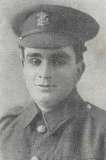
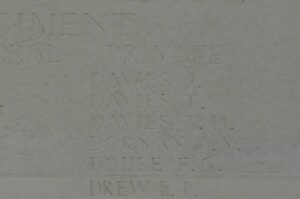
Thomas Rees Davies, Lance Corporal, 24748, Royal Welsh Fusiliers. Thomas was born at Lampeter in 1890, the son of Rees and Mary Davies. The family lived at Treharris prior to the war, and Thomas enlisted there into the army on 8 March 1915. He was posted to the 17th Battalion, Royal Welsh Fusiliers, which was attached to 115 Brigade, 38th (Welsh) Division. Thomas landed in France with the battalion on 5 December 1915, which spent its first winter in the trenches near Armentieres. In June they marched south to the Somme, where they were tasked with the capture of Mametz Wood. The attack on the wood began on 7 July, but met with fierce resistance, and it took until 14 July to totally clear the wood. Thomas was killed in action during the terrible fighting within Mametz Wood, sometime between the 9th and 12th July 1916. He has no known grave, and is commemorated on the Thiepval Memorial, France. Thomas is not commemorated on the Lampeter Memorial.
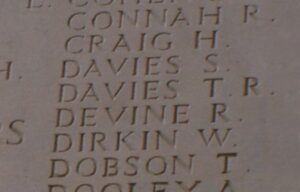
Watkin Jones Davies, Sergeant, 320198, Welsh Regiment. Watkin was the son of Samuel Sarah Davies, of Coedpark, Lampeter. He originally enlisted at Lampeter into the Pembroke Yeomanry prior to the war. During March 1916 the 1/1st Pembroke Yeomanry moved to Egypt, where it merged with the Welsh Border Mounted Brigade and formed the 4th Dismounted Brigade. On 2 February 1917 it merged with the 1/1st Glamorgan Yeomanry to form the 24th Battalion, Welsh Regiment, and became attached to 231 Brigade, 74th (Yeomanry) Division. The Division had formed in Egypt in January 1917 and had fought through the Palestinian Campaign, at the Battles of Gaza and the Battle and capture of Jerusalem. Due to the terrible casualties suffered by the British on the Western Front in March and April 1918 the Division was recalled to the Western Front, and arrived at Marseilles during May 1918. They then fought at the Second Battle of Bapaume during the great offensive, and fought in Flanders before returning to the Somme and fighting at the Battle of Épehy, as part of the offensive towards the Hindenburg Line. Watkin was captured by the Germans at Epehy, and died of wounds in captivity on 21 September 1918. He was 25 years old, and is buried at Cologne Southern Cemetery, Germany.
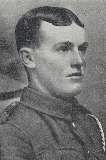
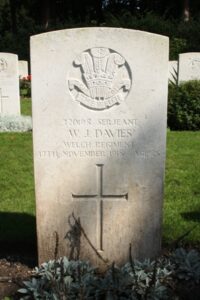
William John Davies, Corporal, 3244, Welsh Guards. William was born in 1884, the son of Joseph and Elizabeth. Davies, Aberdauddwr, Lampeter. He enlisted at Pembrey into the 1st Battalion, Welsh Guards, which was in France attached to the 3rd Guards Brigade, Guards Division. The Welsh Guards saw their first major action during the Battle of Loos on 25 September 1915, remaining in the area during the coming months, where they also fought in the subsequent Action of Hohenzollern Redoubt. In July 1916 the Division moved to the Somme, where they fought at the Battle of Flers-Courcelette, and then at the Battle of Morval, capturing Lesboeufs Village. They remained here for the winter, and in March 1917 took part in the advance caused by the German Retreat to the Hindenburg Line. Later that year they moved north to Ypres, where they fought at the Battle of the Pilckem, and then at the Battle of the Menin Road, Battle of Poelcapelle and the First Battle of Passchendaele. November saw them move south again, where they took part in the Battle of Cambrai. They remained in the area over the final winter of the war, and were stationed near Gouzeaucourt when William was killed in action on 26 February 1918. He was 33 years old, and is buried at Level Crossing Cemetery, Fampoux, France.
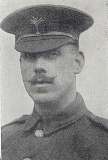
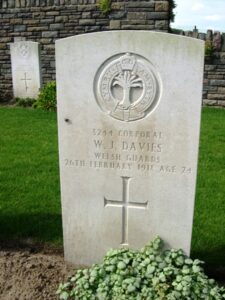
John Charles Edmunds-Davies, Second Lieutenant, Royal Welsh Fusiliers. John was born in 1894, the son of Alderman Walter Davies, JP., and of Agnes Davies, of London House, Harford Square, Lampeter. He was commissioned into the Royal Welsh Fusiliers on 26 July 1915, prior to being sent to France on 11 March 1916, joining the 10th Battalion, Royal Welsh Fusiliers, which was attached to 76 Brigade, 3rd Division. John came home on leave in October 1916, and he married Olive Gwynedd Davies, of Priory Street, Carmarthen, prior to rejoining his battalion on the Somme. Early in 1917 the Division moved to positions near Arras, it was here that John was mortally wounded, whilst at Vimy Ridge on 9 April 1917. John was evacuated to hospital at Abbeville, but died of his wounds in hospital on 12 April 1917, and is buried at Abbeville Communal Cemetery Extension, France. After the war, his widow, Olive, married Captain James Ira Thomas Jones, the famous Welsh Air Ace from St. Clears.
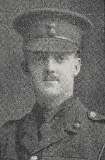
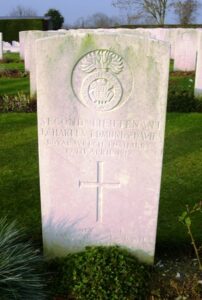
David Clarence Ellis, Air Mechanic, 118248, Royal Air Force. David was the son of John Davies Allen Ellis and Mary Anne Ellis, of High Street, Lampeter. He originally enlisted on 11 August 1914 into the 5th Battalion, Northamptonshire Regiment, but was discharged as medically unfit on 25 September 1914. He enlisted into the 3rd Battalion, South Wales Borderers the following month, but was again discharged on 27 July 1915. Unperturbed, David then enlisted into the Royal Flying Corps, where he became an Air Mechanic. David served with the Royal Flying Corps all the way through the war, but died in hospital at Aberystwyth on 13 May 1919, aged 25, of wounds suffered during the final months of the war. He is buried at Lampeter (St. Peter) Churchyard.
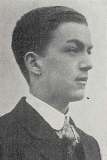
Benjamin Evans, Sergeant, 20115, Welsh Regiment. Benjamin was son of John and Mary Evans, of 8 Market Street, Lampeter. He enlisted at Llanelli into the 15th Battalion, Welsh Regiment, which was known as the Carmarthen Pals battalion, attached to 114 Brigade, 38th (Welsh) Division. On 2 December 1915 the battalion moved to France, and the entire Division moved to the Fleurbaix sector, where it was initiated into trench warfare. During June 1916 the Division marched south to the Somme, and on 7 July 1916 attacked Mametz Wood. The initial attack failed, and it was three days later, on 10 July, that a fresh attack was mounted. Benjamin had been killed within the wood on 10 July 1916. He was 21 years old, and is commemorated on the Thiepval Memorial, France.
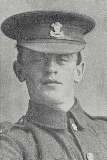
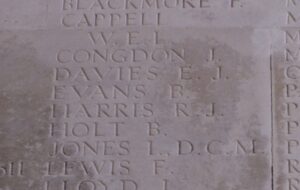
Evan Charles Evans, Company Quartermaster Sergeant, 320161, Welsh Regiment. Evan was born in 1888, the son of David Hugh Evans and Mary Evans, of 34 Bridge Street, Lampeter. He was serving with the Pembroke Yeomanry at the outbreak of war, and was mobilised with them in August 1914. During March 1916 the 1/1st Pembroke Yeomanry moved to Egypt, where it merged with the Welsh Border Mounted Brigade and formed the 4th Dismounted Brigade. On 2 February 1917 it merged with the 1/1st Glamorgan Yeomanry to form the 24th Battalion, Welsh Regiment, and became attached to 231 Brigade, 74th (Yeomanry) Division. The Division had formed in Egypt in January 1917 and had fought through the Palestinian Campaign, at the Battles of Gaza and the Battle and capture of Jerusalem. Due to the terrible casualties suffered by the British on the Western Front in March and April 1918 the Division was recalled to the Western Front, and arrived at Marseilles during May 1918. Evan was wounded on 20 August 1918 when the 24th Welsh made an attack on the German positions at Robecq. He was evacuated to the 39th Hospital, Aire-sur-la-Lys, where he died on 25 August 1918. Evan was 30 years old, and is buried at Aire Communal Cemetery, France.
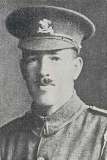
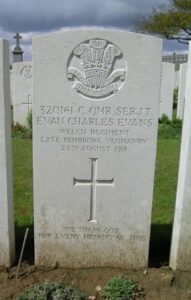
Evan Stanley Evans, Private, S/8176, Devonshire Regiment. Evan was born at Lampeter in 1890, the son of Evan and Jane Grace Evans. By 1911 the family had moved, and were living at 51 Woodville Road, Mumbles. Evan enlisted at Swansea into the 2nd Battalion, Devonshire Regiment. The battalion was attached to 23 Brigade, 8th Division, and moved to the Western Front in November 1914, a badly-needed reinforcement to the BEF which had been all but wiped out at Ypres. Evan landed on 4 January 1915 in France, joining the battalion at Ypres as a reinforcement. Evan was not long in France. He was killed in action on 7 February 1915, aged 24, and is buried at Aubers Ridge British Cemetery, France. Evan is not commemorated on the Lampeter Memorial.
Isaac Evans, Lance Corporal, 11898, Gloucestershire Regiment. Isaac was the son of Mr. and Mrs. John Evans, of 8 Market Street, Lampeter. He worked as a Draper at Westminster prior to the war, and enlisted there into the army. Isaac was posted to the 1st Battalion, Gloucestershire Regiment, which was attached to 3 Brigade, 1st Division. The Division had been one of the first to arrive in France, fighting at the Battle of Mons, and taking part in the retreat to the Marne, where the Germans were stopped. They then fought at the Aisne, and at Chivy, before being moved north to Ypres. Here they fought at the First Battle of Ypres, where they again stopped the German Offensive, before wintering in Flanders. Isaac joined the battalion here as a reinforcement on 2 February 1915, and that year would have fought at the Battle of Aubers Ridge, and the Battle of Loos, and the action at the Hohenzollern redoubt. In 1916 the Division moved south to the Somme, where they fought during the opening of the Somme Offensive. Isaac was killed in action near Pozieres on 8 September 1916. He was 28 years old, and is commemorated on the Thiepval Memorial, France.
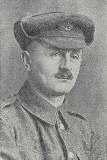
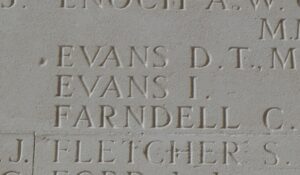
John Walter Evans, Private, 31405, Royal Welsh Fusiliers. John was born in 1893, the son of John and Sarah Evans of Rhydcais, Lampeter. He worked as an Ironmonger at Brynamman prior to the war, and enlisted at Ammanford on 5 June 1915 into the 16th Battalion, Royal Welsh Fusiliers, who were attached to 113 Brigade, 38th (Welsh) Division. The Division moved to France in December, 1915 and moved to positions in the Nursery Sector near Armentieres. Here they trained in trench warfare in a so-called quiet sector, but even this was dangerous, as John was wounded here on 21 February 1916 when he was hit in the head by shell fragments. He was evacuated to the No 10 Hospital at Rouen, where he died of wounds on 22 March 1916, aged just 22. John is buried at St. Sever Cemetery, Rouen, France.
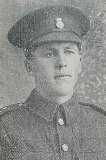
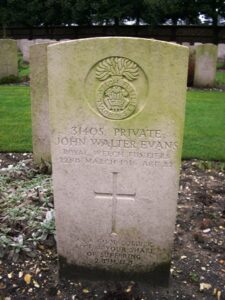
Thomas Davies Evans, Serjeant, 91534, Royal Engineers. Thomas was born at Lampeter on 17 August 1877, the son of Thomas and Margaret Evans. His parents later resided at Glanaman, but Thomas resided at Milford prior to the war. He enlisted at Bridgend into the army, and was posted to the 151st Field Company, Royal Engineers, which was formed at the end of 1914 as part of the 38th (Welsh) Division. The division crossed to France in December 1915, and took the line near Fleurbaix, where it remained until June 1916, when it began the long trek south to the Somme. In July 1916 the Division fought at Mametz Wood, suffering heavy casualties in the capture of the wood, before being moved to the Boesinghe sector, north of Ypres. They remained here for the coming year, and fought at the Battle of Pilckem Ridge on 31 July 1917, and also during the resulting Battle of Langemarck. Thomas was killed around this time, on 4 September 1917, aged 40. He is buried at Bard Cottage Cemetery, Belgium. Thomas is not commemorated on the Lampeter Memorial.
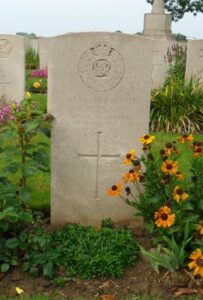
Walter James Evans, Private, 38098, Welsh Regiment. Walter was born at Lampeter, the son of David James Evans and Rachel Evans. The family later resided at 16, Tynycoed Terrace, Penydarren, Merthyr Tydfil, and Walter enlisted there into the 4th Dragoon Guards. Walter then transferred into the 8th Battalion, Welsh Regiment, which was attached to 40 Brigade, 13th (Western) Division. On 13 June 1915 the Division sailed for Alexandria, and moved to Mudros before being landed at Cape Helles, Gallipoli from 6 July 1915, relieving the 29th Division. They left and returned to Mudros at the end of the month, and the entire Division landed at ANZAC Cove from 3 August, 1915, taking part in the Battles of Sari Bair, Russell’s Top, and Hill 60, ANZAC. Soon afterwards the Division was transferred from ANZAC to Suvla Bay, where it remained over the last few months of the campaign. Walter became ill at Suvla, and was evacuated to Malta for treatment. He died there on 31 December 1915, aged 19, and is buried at Pieta Military Cemetery, Malta. Walter is not commemorated on the Lampeter Memorial.
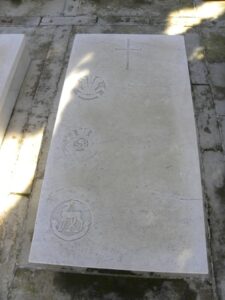
Watkin Llewellyn Evans, Rifleman, R/14272, King’s Royal Rifle Corps. Watkin was born on 31 October 1895, the son of David and Charlotte Evans, of Troedyrhiw, North Road, Lampeter. He worked as a Clerk for the Great Western Railway prior to the war, and enlisted on 8 June 1915 into the King’s Royal Rifle Corps. On 30 January 1917 Watkin was posted to France, joining the 2nd Battalion, King’s Royal Rifle Corps, which was attached to 2 Brigade, 1st Division. The Division followed the German retreat to the Hindenburg Line in early 1917, and was then briefed for an operation on the Flanders Coast, and moved there during the summer of 1917. Watkin was captured by the Germans here on 10 July 1917, and was taken to Limburg POW camp in Germany. He was released after the armistice, but was very ill, probably suffering from influenza, and died on 20 December 1918, aged 22. Watkin is buried at St. Germain-Au-Mont-D’Or Communal Cemetery Extension, France.
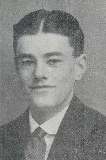
John Henry Harford, Lieutenant, South Wales Borderers. John was born on 7 February 1896, the eldest son of Major John Charles Harford, and Blanche Amabel Harford of Falcondale, Lampeter, and of Blaise Castle. He was educated at Harrow, prior to being commissioned in March 1915 into the 3rd Battalion, South Wales Borderers. John was posted to Gallipoli attached to the 2nd Battalion, Royal Fusiliers, and was wounded there on 30 June 1915. He returned home to recover, before being posted to France, with the 2nd Battalion, South Wales Borderers, which was on the Somme attached to 87 Brigade, 29th Division. John survived the carnage of the attack on Y-Ravine on 1 July 1916, and was with the battalion when it returned to the line at Gueudeaucourt on 19 October. On 25 October 1916, John went out into No Man’s Land to reconnoitre the enemy wire when he was shot by a German sniper. He was 20 years old, and is commemorated on the Thiepval Memorial, France.
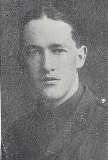
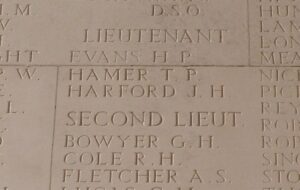
Lewis James Herbert, Steward, Merchant Navy. Lewis was the son of James and Mary Ann Herbert, of Bryn Cottage, Church Street, Lampeter. He served with the Mercantile Marine aboard the SS Arab, a Shanghai registered steamer. On 7 January 1918, Arab was on route from Cardiff to Messina with a cargo of coal when she was torpedoed and sunk by the German submarine UB-50, 18 miles off Cape Serrat. Lewis was among 21 men who died in the sinking. He was 16 years old, and is commemorated on the Tower Hill Memorial, London.
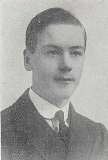
John Henry Howell, Sub Lieutenant, Royal Naval Reserve. John was the son of Hugh William Howell and Florentia Anne Howell (nee Lloyd), of Old Bank House, High Street, Lampeter. John had served aboard the SS Empress of Britain, and was then based at Cameroon, at HMS Astraea, where he was wounded. He returned home to recuperate, and was riding his motorbike at Llandovery when he crashed, and was killed on 3 July 1916. John was 22 years old, and is buried at Lampeter (St. Peter) Churchyard.
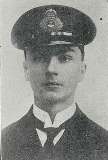
Jenkin Oliver Howells, Private, 102403, Machine Gun Corps. Jenkin was the son of Jenkin and Anne Howells, of White Hart Inn, Lampeter. He enlisted at Cardiff on 11 December 1915 into the army, and was posted to France, joining the 46th Battalion, Machine Gun Corps, which was attached to the 46th (North Midland) Division. Jenkin probably joined the Division after its attack at Gommecourt on 1 July 1916, where it suffered terrible casualties. They rested for several months at Arras, and at the end of 1916 took part in Operations on the Ancre. During March 1917 the Division followed the German Retreat to the Hindenburg Line, and then fought in the Battle of Arras, taking part in the Battle of Hill 70. In 1918 the Division took part in the Advance in Flanders, and then moved south, where they were tasked with the breaking of the Hindenburg Line. They fought at the Battle of the St Quentin Canal at the end of September, where the 137th Brigade completed one of the finest feats of arms in British military history, when it forced the crossing of the St Quentin Canal at Riqueval. Jenkin was killed during the breaking of the Hindenburg Line, on 29 September 1918. He was 21 years old, and is buried at Bellicourt British Cemetery, France.
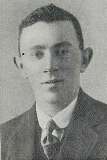
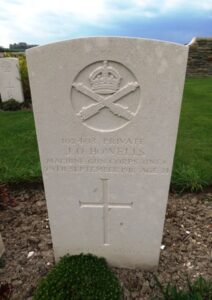
John Stanley Jenkins, Seaman, Z/1208, Royal Naval Reserve. John was born on 15 March 1896, the son of Mr. and Mrs. David Jenkins, of 7, Shelden Street, Paddington, London. Prior to the war he was educated at Lampeter, and lived there with his Aunt, Mrs. Jones, at Beehive, High Street, Lampeter. John enlisted on 4 January 1915 into Benbow Battalion, Royal Naval Reserve, and was transferred to Anson Battalion on 5 March 1915, sailing for the Mediterranean, where he joined the Base Depot at Mudros. The Royal Naval Division was fighting a Gallipoli, throughout 1915, until being evacuated to Mudros. The Division transferred from the authority of the Admiralty to the War Office on 29 April 1916, and was re-designated the 63rd (Royal Naval) Division on 19 July 1916, arriving at Marseilles during May 1916, and moved to positions on the Somme. Here, the Division took part in the Battle of the Ancre, making a famous attack on Beaumont Hamel. John was killed in action here on 13 November 1916, aged 20. He has no known grave, and is commemorated on the Thiepval Memorial, France.
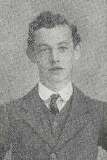
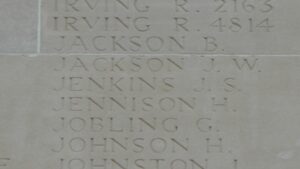
Daniel Jones, Private, M/338768, Royal Army Service Corps. Daniel was born at Lampeter in 1879. He married in 1906, and resided with his wife, Mary Jones, at Carmarthen prior to the war. Daniel enlisted at Swansea into the Army Service Corps, and was posted to East Africa, with the 648th MT Company, Army Service Corps. Daniel died in Tanzania on 24 January 1918. He was 38 years old, and is buried at Dar Es Salaam War Cemetery, Tanzania. Mary returned to her native Swansea during the war, residing at 87, Kilvey Road, St. Thomas, Swansea. Daniel is not commemorated on the Lampeter Memorial.
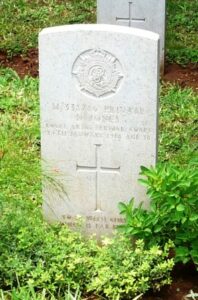
David Jones, Corporal, 3061, Oxfordshire and Buckinghamshire Light Infantry. David was the son of David and Margaret Jones, of Ty’nfron, Silian, Lampeter. He was employed at Caxton Hall prior to the war, and enlisted into the army. David was posted to France on 29 March 1915, with the 1/4th Battalion, Oxfordshire and Buckinghamshire Light Infantry, which was attached to 145 Brigade, 48th (South Midland) Division. The Division moved to France between 22 March and 1 April 1915, and saw its first major engagement at the opening of the Battle of the Somme, holding the line between Gommecourt and Serre. Within weeks the Division moved up to Pozieres, and it was here, on 23 July 1916, that David was killed. He was 27 years old, and is buried at Pozières British Cemetery, France.
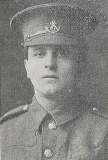
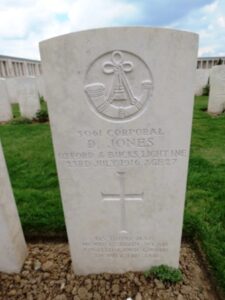
David Robert Jones, Lance Corporal, 320211, Welsh Regiment. David was son of the late John and Sarah Jones, of Cefnbryn House, High Street, Lampeter. He had served with the Pembroke Yeomanry for several years prior to the war. During March 1916 the 1/1st Pembroke Yeomanry moved to Egypt, where it merged with the Welsh Border Mounted Brigade and formed the 4th Dismounted Brigade. On 2 February 1917 it merged with the 1/1st Glamorgan Yeomanry to form the 24th Battalion, Welsh Regiment, and became attached to 231 Brigade, 74th (Yeomanry) Division. The Division had formed in Egypt in January 1917 and had fought through the Palestinian Campaign, at the Battles of Gaza and the Battle and capture of Jerusalem. David was killed in action here during the Third Battle of Gaza, on 6 November 1917. He was 28 years old, and is buried at Beersheba War Cemetery, Israel.
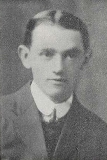
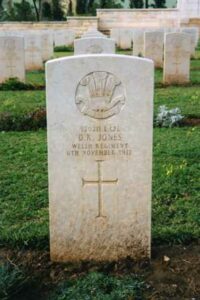
James Mayberry Jones, Private, 26556, South Wales Borderers. James was the son of David Enoch Jones and Mary Anne Jones, 30 College Street, Lampeter. He enlisted at Lampeter into the South Wales Borderers, and was posted to France early in 1916, joining the 2nd Battalion, South Wales Borderers, which had recently arrived from Gallipoli, attached to 87 Brigade, 29th Division. James joined the battalion on the Somme, where it held positions near Beaumont Hamel, opposite Y-Ravine, a strongly defended German position. On 1 July 1916 the Division attacked Y-Ravine, and was decimated by concentrated machine-gun fire, the 2nd SWB alone losing over 400 men in little under an hour. James was killed whilst on patrol at around 02.00 on the morning of 22 July 1916, when the Germans launched a brief but fierce artillery bombardment on the battalion. He was 22 years old, and is commemorated on the Thiepval Memorial, France.
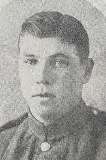
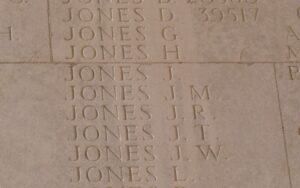
John Jones, Private, 20819, Welsh Regiment. John was born at Lampeter in 1896, the son of Mary Jones. They resided at 4, Dogsbrook Terrace, Saron prior to the war. John enlisted at Rhyl into the 15th Battalion, Welsh Regiment, which was known as the Carmarthen Pals battalion, attached to 114 Brigade, 38th (Welsh) Division. On 2 December 1915 the battalion moved to France, and the entire Division moved to the Fleurbaix sector, where it was initiated into trench warfare. On 9 March 1916, the 15th Welsh were holding the La Pannerie sector, near Cuinchy, when the Germans exploded three underground mines in their lines. John was one of seven men killed that day, with many more wounded. John was 19 years old, and is buried at Guards Cemetery, Windy Corner, Cuinchy, France. John is not commemorated on the Lampeter Memorial.
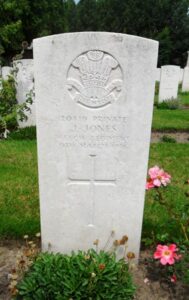
John Lewis Jones, Second Lieutenant, Welsh Regiment. John was the son of Doctor William Lewis and Elizabeth Jones, of Glyncothi, Nantgaredig, and the cousin of Mrs. Walters and Miss Davies, Walters Hotel, Lampeter. He studied at Oxford prior to being commissioned into the Welsh Regiment, and had joined the 3rd Battalion for his training. John was sent to France in 1916, and fought there for seven months with one of the Service Battalions of the Welsh Regiment, until he was gassed, and sent home for treatment. John’s condition worsened and he died at Bedford House Hospital, Cardiff on 13 August 1917. John is buried at Llanegwad (St. Egwad) Churchyard, North of the Church tower.
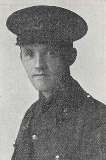
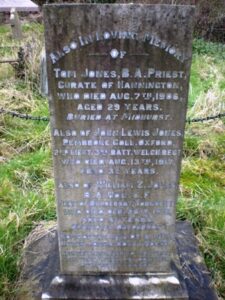
John Simon Jones, Private, 51113, Manchester Regiment. John was the son of David and Elizabeth Jones, of 12, Bridge Street, Lampeter. He enlisted at Aberystwyth into the Army Service Corps, and was later posted to the 17th Battalion, Manchester Regiment, which was attached to 90 Brigade, 30th Division. The Division moved to France in November 1915, and took part in the Somme Offensive. In March 1917 the Division followed the German Retreat to the Hindenburg Line, and in April took part in the First Battle of the Scarpe, and then at the later Second Battle of the Scarpe. Later that year they were moved north to Ypres, and fought at the Battle of Pilckem. At the beginning of 1918 the Division were stationed near St. Quentin, and when the Germans launched their Offensive here on 21 March, the Division took part in the Battle of St Quentin, but were pushed back, fighting at the Actions at the Somme Crossings, and the Battle of Rosieres. They were then pulled from the line to rest and rebuild, and moved to Flanders, but were caught up in the action again here when the Germans launched a fresh offensive along the Lys. John was killed here during heavy fighting around Kemmel, on 30 April 1918. He was 22 years old, and is commemorated on the Tyne Cot Memorial, Belgium.
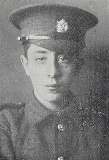
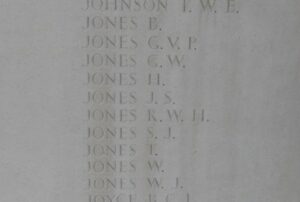
Leon Jones, Gunner, 1028, Royal Field Artillery. Leon was the son of Evan Nathaniel Jones and Amelia Jones, of East Lodge, Falcondale. He enlisted on 8 October 1914 into the Cardigan Battery (1st/2nd Welsh Brigade), Royal Field Artillery. On 20 November 1915 Leon embarked at Southampton for France. Leon then entrained for Marseilles, embarking on 5 February 1915 for Alexandria, arriving on 10 February, and proceeded with the Battery at Wardan Camp, Egypt. Leon suffered a heart attack in his sleep on 21 April 1916. His friend, Private J. Herbert, who had enlisted with him, tried to awaken Leon, before running to fetch the doctor, who pronounced Leon dead. Leon was 26 years old, and was buried at Beni Salama Cemetery. Sadly his grave was lost at some time, so Leon is now commemorated upon a Special Memorial at Cairo War Memorial Cemetery, Egypt.
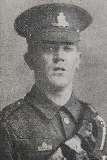
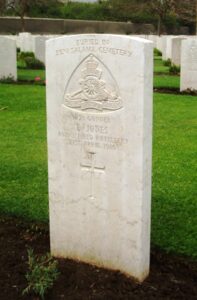
Thomas John Jones, Private, 320238, Welsh Regiment. Thomas was born at Lampeter in 1889, the son of Mr. and Mrs. Lewis Jones. The family later resided at Tycefn, Llansawel, and Thomas enlisted at Carmarthen into the Pembroke Yeomanry. During March 1916 the 1/1st Pembroke Yeomanry moved to Egypt, where it merged with the Welsh Border Mounted Brigade and formed the 4th Dismounted Brigade. On 2 February 1917 it merged with the 1/1st Glamorgan Yeomanry to form the 24th Battalion, Welsh Regiment, and became attached to 231 Brigade, 74th (Yeomanry) Division. The Division had formed in Egypt in January 1917 and had fought through the Palestinian Campaign, at the Battles of Gaza and the Battle and capture of Jerusalem. Thomas was wounded during the Third Battle of Gaza, and died on 6 November 1917. He was 27 years old, and is buried at Beersheba War Cemetery, Israel. Thomas is not commemorated on the Lampeter Memorial.

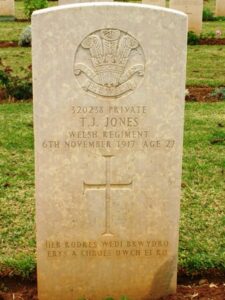
Thomas Lloyd Jones, Private, 16523, Royal Welsh Fusiliers. Thomas was in 1894 the son of Alderman William Jones and Jane Jones, of Bryndewi, Bryn Road, Lampeter. He enlisted at Aberystwyth into the 13th Battalion, Royal Welsh Fusiliers, which was formed in August 1914 at Colwyn Bay. On 28 April 1915 the battalion became part of 113 Brigade, 38th (Welsh) Division. The Division had landed in France during December 1915 and had spent their first winter in the trenches near Armentieres. In June they marched south to the Somme, where they were tasked with the capture of Mametz Wood. The attack on the wood began on 7 July, but met with fierce resistance, and it took until 14 July to totally clear the wood. Thomas was wounded during the heavy fighting in the wood on 10 July, and was evacuated to Daours, where he died on 11 July 1916. Thomas was 22 years old, and is buried at Daours Communal Cemetery Extension, France.
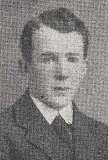
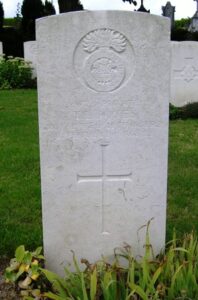
William Alfred Jones, Private, 29740, South Wales Borderers. William was the son of Basil and Mary Jones, of 29, High Street, Lampeter. He enlisted at Lampeter into the army, and was posted to France in 1916, joining the 1st Battalion, South Wales Borderers, which was attached to 3 Brigade, 1st Division. During 1916 the Division fought during the opening of the Somme Offensive at the Battle of Albert, then at Bazentin, Pozieres, Flers-Courcelette and Morval. They followed the German retreat to the Hindenburg Line in early 1917, and were then briefed for an operation on the Flanders Coast, and moved there during the summer of 1917. When the Third Battle of Ypres had stalled in the mire, the Division was recalled to Ypres, and fought at the Second Battle of Passchendaele. William was killed in action during a heavy German counter-attack on the Goudberg Spur on 10 November 1917. He was 20 years old, and is commemorated on the Tyne Cot Memorial, Belgium. 10 officers and 372 men of the 1st SWB were listed as killed or wounded during that one day.
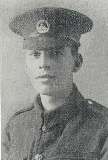
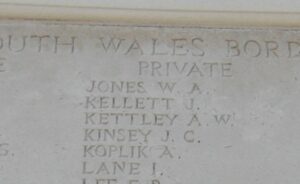
David Lloyd, Corporal, 58639, Royal Field Artillery. David was the son of Ruth Illingworth (nee Lloyd), of Drover’s Road, Lampeter. He enlisted at Swansea into the Royal Artillery, and was posted to France, where he joined A Battery, 105th Brigade, which was attached to the 23rd Division. During August 1915 the David landed at Boulogne with the Division, which concentrated near Tilques. They saw their first major action at the Battle of Albert, where they captured Contalmaison, and then fought at the Battle of Bazentin. David was killed during the shelling of Bazentin Ridge, on 6 August 1916, aged 28. He is buried at Flatiron Copse Cemetery, France.
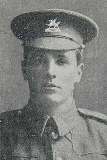
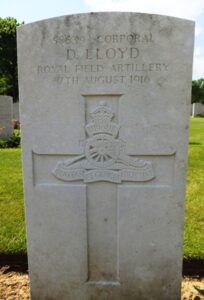
Richard Gray Morgan, Able Seaman, 757076A, Mercantile Marine Reserve. Richard was the son of Captain James Morgan and Katie Morgan, of Fountain Inn, Lampeter. He served with the Mercantile Marine aboard HM Tug Fylde, which was based at Queenstown, Ireland. Richard took ill towards the end of the war, and died of pneumonia at Haulbowline Hospital, Queenstown on 19 November 1918. He was 21 years old, and is buried at Cobh Old Church Cemetery, Ireland.
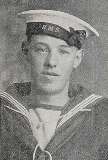
John Llewelyn Morgans, Private, M2/192135, Army Service Corps. John was born at Lampeter in 1897, the son of Margaret Morgans. They family later resided at 29, Romilly Crescent, Cardiff, and John enlisted there into the army. He was posted to France with the 40th Mechanical Transport Company, Army Service Corps, which moved to Ypres to carry out supplies for the troops fighting at Passchendaele. John was killed in action near Poperinghe on 19 August 1917. He was 20 years old, and is buried at Reninghelest New Military Cemetery, Belgium. John is not commemorated at Lampeter.
Thomas Newby, Sergeant, 320513, Welsh Regiment. Thomas was born at Lampeter in 1889, the son of John and Elizabeth Newby. The family were from Cardiff, and Thomas later resided there prior to the war with his wife, Maud Mary Newby, at 16, Corporation Road, Grangetown, Cardiff. Thomas served with the Glamorgan Yeomanry for several years prior to the war. During March 1916 the 1/1st Glamorgan Yeomanry moved to Egypt, where it merged with the Welsh Border Mounted Brigade and formed the 4th Dismounted Brigade. On 2 February 1917 it merged with the 1/1st Pembroke Yeomanry to form the 24th Battalion, Welsh Regiment, and became attached to 231 Brigade, 74th (Yeomanry) Division. The Division had formed in Egypt in January 1917 and had fought through the Palestinian Campaign, at the Battles of Gaza and the Battle and capture of Jerusalem. Thomas was killed at Jerusalem on 1 December 1917. He was 38 years old, and is buried at Jerusalem War Cemetery, Israel. Thomas is not commemorated on the Lampeter Memorial.
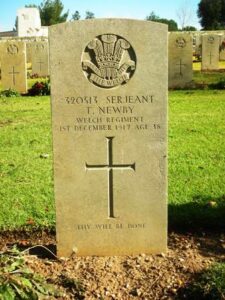
Arthur Oakes, Gunner, 1795, Royal Field Artillery. Arthur was born at Cardigan in 1870, and resided at Lampeter prior to the war, with his wife, Mrs. Oakes, at 11a Peterwell Terrace, Lampeter. He enlisted at Aberystwyth into the Royal Artillery, and was posted to C Battery, 341st Brigade, Royal Field Artillery. Arthur became ill with pneumonia, and died at the Bedford Military Hospital on 11 November 1916, aged 46. Arthur is buried at Bedford Cemetery, England.
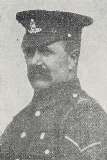
Thomas Parry, Private, 15668, Royal Irish Fusiliers. Thomas was the son of Thomas and Gwenllian Parry, of Ffinant Cottage, Lampeter. He enlisted at Mardy into the army at the outbreak of war, and was posted to the 6th Battalion, Royal Irish Fusiliers. The battalion had formed at Armagh in August 1914, joining 31 Brigade, 10th (Irish) Division, and in July 1915 sailed from Liverpool for Gallipoli, landing at Suvla Bay on 7 August 1915. The Division was immediately plunged into desperate fighting during the attack on Chocolate Hill. Thomas was killed in action here on 15 August 1915. He was 36 years old, and is commemorated on the Helles Memorial, Gallipoli. Thomas is not commemorated on the Lampeter Memorial.
James Leonard Pocock, Corporal, 26715, Welsh Regiment. James was the son of Leonard and Mary Jane Pocock, of Pantmawr, Lampeter. He enlisted at Lampeter into the Welsh Regiment, and was posted to France in 1916, joining the 9th Battalion, Welsh Regiment, which was attached to 58 Brigade, 19th (Western) Division. The Division moved to France during July 1915, and moved to positions near Loos, where it took part in the opening attack of the Battle of Loos on 25 September 1915. The following year the Division moved to the Somme, where it took part in the second wave of the attack on Ovillers-La Boiselle on 1 July, capturing the village at heavy cost. It then fought through the Somme Battles of Pozières and the Ancre in 1916. In 1917 the Division moved north to Ypres, taking part in the Battle of Messines. James was wounded at Messines on 7 June 1917, and was evacuated to the 2nd Canadian Casualty Clearing Station at Remy Sidings for treatment. He died of his wounds there on 9 June 1917, aged 22, and is buried at Lijssenthoek Military Cemetery, Belgium.
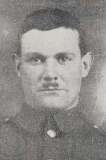
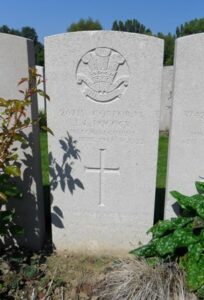
Rhys Rees, Gunner, 61241, Royal Garrison Artillery. Rhys was the son of Mary Jenkins, of Emlyn House, Cribyn, Llanybydder. He enlisted at Lampeter into the Royal Artillery, and was posted to France with the 130th Battery, Royal Garrison Artillery. The Battery was attached to the Fourth Army, and was caught up in German Spring offensive in 1918. The Fourth Army suffered terribly in this onslaught, and Rhys was one of those who died of wounds received in this terrible part of the war, aged 33, on 13 April 1918. He is buried in Namps-Au-Val British Cemetery, France.
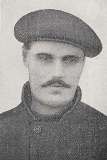
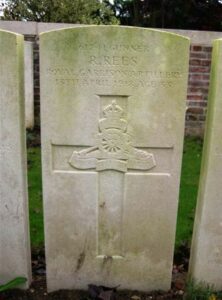
Ella Richards, Nurse, Voluntary Aid Detachment. Ella was the daughter of Timothy and Hannah Richards, of Ardwyn, Bridge Street, Lampeter. She volunteered to serve as a Nurse with the British Army at the outbreak of war, and after serving in Britain, embarked for Egypt, from there being posted to Salonika, where she served at Mikra with the Voluntary Aid Detachment. Ella became ill towards the war, after contracting pneumonia, and died on 14 October 1918. Ella was 31 years old, and is buried at Mikra British Cemetery, Salonika.
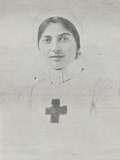
James Richards, Private, 35219, East Yorkshire Regiment. James was born at Lampeter in 1893, the son of Richard and Margaret Richards. The family later resided at 54, Glyn Street, Cymmer, Porth, and James enlisted there on 4 September 1915 into the King’s Own Yorkshire Light Infantry. James was later posted to the 12th Battalion, East Yorkshire Regiment, which was attached to 92 Brigade, 31st Division. During December 1915 the Division moved to Egypt, and took part in the defence of Suez Canal. In March 1916 it moved to France and saw its first major action at the Battle of Albert in July 1916. The Division took part in the assault on Serre, and suffered very high casualties. It was withdrawn for several months as a result. They moved back into the line in November 1916 and took part in the Battle of the Ancre, and then wintered on the Ancre, until moving to Arras the following year. Here they fought at the Third Battle of the Scarpe, and helped in the capture of Oppy Wood. James was killed in action here on 13 May 1917. He was 23 years old, and is buried at Point-Du-Jour Military Cemetery, Athies, France. James is not commemorated on the Lampeter Memorial.
Timothy Richards, Private, 42247, Lincolnshire Regiment. Timothy was the son of Mr. and Thomas and Margaret Richards, of 10, Harford Row, Lampeter. He originally served with the Royal Flying Corps, before being transferred into the 10th Battalion, Lincolnshire Regiment. The battalion was attached to 197 Brigade, 66th (2nd East Lancs) Division, and concentrated on the Western Front by 16 March 1917, moving to the Flanders Coast. At the end of September 1917 they moved to Ypres, and took part in the Battle of Poelcapelle. Timothy was killed in action here on 14 October 1917. He was 30 years old, and is buried at Bleuet Farm Cemetery, Belgium.
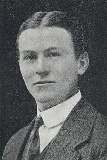
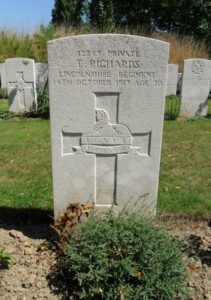
Thomas Cyril Roberts, Private, 288051, Welsh Regiment. Thomas was the son of Thomas and Mary Roberts, of Plasybryn, Lampeter. He enlisted at Carmarthen into the army, and was posted to the 6th Battalion, Welsh Regiment, which was in France attached to the 1st Division. The battalion was the Pioneer battalion to the Division, and had been one of the first Territorial units in France. Thomas probably joined the battalion at the end of 1916, on the Somme. The Division followed the German retreat to the Hindenburg Line in early 1917, and was then briefed for an operation on the Flanders Coast, moving there during the summer of 1917. Meanwhile the Third Battle of Ypres had stalled in the mire, and the Division was recalled to Ypres, where they fought at the Second Battle of Passchendaele. Thomas was wounded at Passchendaele on 30 October 1917 and evacuated to a Casualty Clearing Station near Proven, where he died of his wounds on 11 November 1917. Thomas was 22 years old, and is buried at Dozinghem Military Cemetery, Belgium.
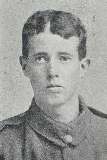
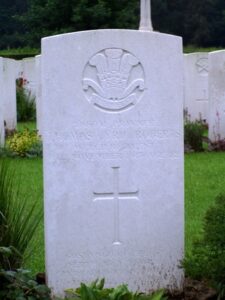
David Sturdy, Gunner, 282516, Royal Garrison Artillery. David was the son of Mr. and Mrs. John Sturdy, of Hillside, Lampeter. He had served during the war with the 132nd Heavy Brigade, Royal Garrison Artillery. During the final offensive, David was gassed, and returned to Britain, where he was hospitalised at the Park Howard Military Hospital, Llanelli. He died there on 13 October 1919, aged 36, and is buried at Lampeter (St. Peter) Churchyard. His brother Harry died in 1921 due to the effects of the war.
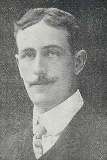
Harry Sturdy, Sergeant, 200214, South Wales Borderers. Harry was the son of Mr. and Mrs. John Sturdy, of Hillside, Lampeter. He had served throughout the war at Aden and in India, with the 1/1st Battalion, Brecknock Battalion, South Wales Borderers. Towards the end of the war Harry contracted dysentery, and was invalided home. He suffered with ill health until his untimely death on 27 June 1921. Harry was 29 years old, and is buried at Lampeter (St. Peter) Churchyard. His brother David had died in 1919 due to the effects of the war.
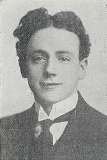
David Roderick Thomas, Private, S4/414378, Royal Army Service Corps. David was the son of Evan and Margaret Thomas, of Rosedale, Bridge Street, Lampeter. He enlisted at Lampeter into the Army Service Corps, and was posted to Salonika with the 361st Depot Unit, Army Service Corps. David was killed at Salonika on 27 February 1917. He was 21 years old, and is buried at Lembet Road Cemetery, Salonika. His brother Rhys was awarded the DCM while serving with the 24th Welsh during the capture of Jerusalem.
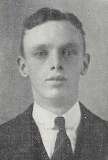
Thomas Oliver Thomas, Second Lieutenant, Royal Welsh Fusiliers. Thomas was born at Lampeter in 1895, the son of the Reverend David Pritchard Thomas and Sarah Jane Thomas. The family later resided at The Rectory, Llanberis, Merioneth. He had been educated at Lampeter College, before becoming a schoolmaster in London, and enlisted there at the outbreak of war into the Public Schools Battalion, Royal Fusiliers. Thomas was commissioned into the Royal Welsh Fusiliers in 1915, and was posted to France in December 1915 with the 17th Battalion, Royal Welsh Fusiliers, which was attached to 115 Brigade, 38th (Welsh) Division. The Division moved to the Fleurbaix sector, where it was initiated into trench warfare. During June 1916 the Division marched south to the Somme, and on 7 July 1916 attacked Mametz Wood. The initial attack failed, and it was three days later, on 10 July, that a fresh attack was mounted. Thomas was killed in action during the terrible fighting in the wood on 11 July 1916. He was 22 years old, and is commemorated on the Thiepval Memorial, France. Thomas is not commemorated on the Lampeter Memorial, nor on the St David’s College Memorial.
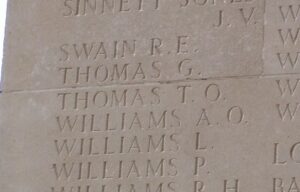
Denis Noel Tyrrell-Green, Lieutenant, Royal Sussex Regiment. Denis was born at Lampeter on 10 October 1894, the son of Professor Tyrrell-Green S.D.C. and Margaret Tyrrell-Green. His father had been teaching at Lampeter College, before moving to Jesus College, Cambridge, and Denis was educated there, joining the OTC. He was commissioned in September 1914 into the 4th Battalion, Royal Sussex Regiment, which was attached to 160 Brigade, 53rd (Welsh) Division. The Division sailed from Devonport in July 1915, landing at Gallipoli on 9 August 1915. Here the Division was immediately thrown into action, and spent the next few days in isolated pockets, fighting against a Turkish counter-attack during the Battle of Sari Bair, then the ensuing Attack on Scimitar Hill. Denis was invalided home from Gallipoli, and after recovering rejoined his unit at Egypt, taking part in the subsequent advance into Palestine. Denis was killed in action during the First battle of Gaza, on 26 March 1917. He was 22 years old, and is commemorated on the Jerusalem Memorial, Israel.
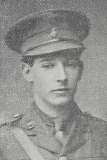
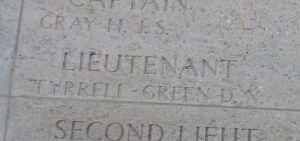
Lionel Robson Warburton, Sergeant, 24439, Royal Welsh Fusiliers. Lionel was the son of Seth and Mary Ann Warburton, of Beech Cottage, Walton, Wakefield, Yorkshire. He worked at Falcondale prior to the war, and enlisted at Aberystwyth into the Royal Field Artillery on 15 January 1915. Lionel was posted to the 3rd Battalion, Royal Welsh Fusiliers soon after. He landed in France on 15 March 1918, and was posted to the 4th Battalion, Royal Welsh Fusiliers (Denbighshire), which was the pioneer battalion to the 47th (2nd London) Division. On 20 August 1918, Lionel was one of a number of men in a working party, who were salvaging stokes mortar shells, when the shells exploded, killing four men, mortally wounding three, and seriously wounding Lionel and two other men. Lionel died in hospital two days later, on 22 August 1918, aged 25. He is buried in Daours Communal Cemetery Extension, France. Lionel is not commemorated locally.
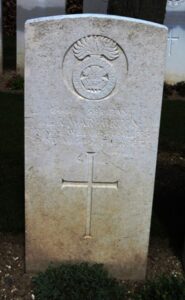
Evan David Williams, Private, 32892, Welsh Regiment. Evan was the son of Mr. and Mrs. Williams, of Greenfield Terrace, Lampeter. Evan had enlisted into the army, and was posted to the 13th Battalion, Welsh Regiment, which was known as the 2nd Rhondda Battalion, attached to 114 Brigade, 38th (Welsh) Division. On 2 December 1915 the battalion moved to France, and the entire Division moved to the Fleurbaix sector, where it was initiated into trench warfare. During June 1916 the Division marched south to the Somme, and on 7 July 1916 attacked Mametz Wood. The initial attack failed, and it was three days later, on 10 July, that a fresh attack was mounted. After two days of heavy hand to hand fighting within the wood, the Germans withdrew, and the battered Welshmen moved via Hebuterne to Boesinghe, on the Yser Canal, where it remained until launching its attack on Pilckem Ridge on 31 July 1917. The 15th Welsh remained in the line, and also took part in the Battle of Langemarck, before the entire Division was moved to positions near Armentieres over the winter. After the Germans launched their offensive on the Somme on 21 March 1918, the Division was moved back to the Somme, and took up positions north of Albert, around Aveluy Wood. On 21 August 1918 the Welshmen crossed the River Ancre, launching an attack on Thiepval and Pozieres Ridges. Within two days the ground had been captured, and the Division took part in the great offensive, helping to drive the Germans back towards the Hindenburg Line. Evan was gassed towards the end of his time at war, and was discharged from the army on 15 January 1919. He died as a result of his gas poisoning at Ynys Farm, Llanfair-Clydogau on 22 July 1919, aged 28, and is buried at Llanfair Clydogau (St. Mary) Churchyard.
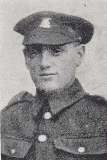
Evan Davies Williams, Private, 49305, Royal Army Medical Corps. Evan was the son of Daniel and Mary Williams, of Pwllgrafel, Lampeter. Evan had served with the 6th Welsh Territorials prior to the war, and enlisted into the 9th Welsh at Maesteg on 25 August 1914. Two months later he was transferred to the 39th Field Ambulance, Royal Army Medical Corps, and landed in France on 20 June 1915. Evan served in France until being invalided to the 46th Stationary Hospital at Etaples on 13 November 1917, suffering from tuberculosis, which looks to have been brought on after being gassed. He arrived back in Britain on 29 November 1917, when he was invalided home. Evan was discharged from the army on 7 January 1918, and was hospitalised at Ely, near Cardiff. Evan died at Ely on 29 October 1918, aged 27. He is not commemorated by the CWGC, so nothing further is yet known of him.
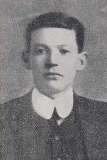
World War Two, 1939-1945
Maynard Kingsley Archdall, Captain, 137870, Royal Artillery. Maynard was born in Australia on 12 February 1919, the son of the Revd. Canon Henry Kingsley Archdall, M.A., and Laura Archdall, of St. Marychurch Vicarage, Torquay, Devon. Henry was Principal of St David’s College, Lampeter from 1938 to 1953. Maynard attended King’s School and King’s College and later Cambridge University, from where he was commissioned in 1939. Maynard fathered a daughter with Rosa Charlotte Louise Kirbyshire prior to joining 18 Field Regiment, Royal Artillery, and was posted to Burma. He was killed in action during the advance against the Japanese from Assam to Mandalay on 8 April 1945. Maynard was 26 years old, and is buried at Taukkyan War Cemetery, Burma. His brother Warwick Henry, also died on service.
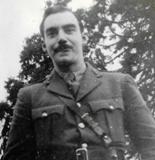
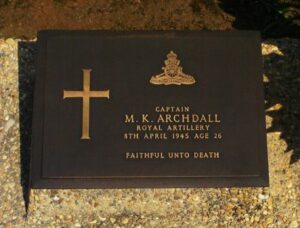
Warwick Henry Archdall, Captain, 174209, Suffolk Regiment. Warwick was the son of the Revd. Canon Henry Kingsley Archdall, M.A., and Laura Archdall of Torquay, Devon. Henry was Principal of St David’s College, Lampeter from 1938 to 1953. Warwick had studied for his M.A. (Cantab.) at Corpus Christi College prior to the war, and was commissioned in March 1941 into the 1st Battalion, Suffolk Regiment. Warwick married Rose Isabel Simich in Cambridge in 1941, and she gave birth to their daughter, Janabelle in 1943. Warwick landed with his battalion on Queen White Beach, Hermanville-sur-Mer, on 6 June 1944. On 28 June 1944, the battalion made an assault on the Chateau de la Londe, Normandy. Warwick was killed during the resulting firefight. He was 28 years old, and is buried at Hermanville War Cemetery, France. His brother, Maynard Kingsley Archdall, also died on service.

David Edward Brown, Captain, 151399, Royal Artillery. David was the son of Dr. David Brown and Edna Brown, and the husband of Margaret Brown, of Musselburgh, Midlothian. He served with 17 Field Regiment, Royal Artillery. David was killed during the last days of the war in North Africa, on 23 April 1943. He was 28 years old, and is buried at Medjez-El-Bab War Cemetery, Tunisia.
David Austin Davies, Able Seaman, Merchant Navy. David was the son of William Davies, Grocer, of Boro Stores, Bridge Street, Lampeter. He served with the Merchant Navy aboard the S.S. Empire Simba. He died of malaria at Freetown on 2 December 1943, aged 23. He is not commemorated by the CWGC, so nothing more is presently known of him, but he is most likely buried at Freetown (King Tom) Cemetery, Sierra Leone.
Gareth Gwyn Evans, Second Lieutenant, Army. Gareth was the son of John Edward and Anne Jane Evans, of Nantygelli, Lampeter. He was commissioned into the army, and embarked for Burma, joining a reserve officer pool there. Gareth died in Burma on 30 March 1942. He was 29 years old, and is commemorated on the Rangoon Memorial, Myanmar.
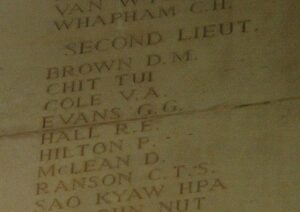
Geoffrey Edward Franklin, Flying Officer, 142089, Royal Air Force Volunteer Reserve. Geoffrey was the son of George Franklin and of Frances Franklin (nee Summers), of Aston, Warwickshire. He married Alberta Margaret Vaughan-Jones, of Lampeter in 1941. He served as a Navigator with 49 Squadron, Royal Air Force, which was a heavy bomber unit, equipped with the Avro Lancaster. On 29 July 1944 Geoffrey was aboard Lancaster JB-701 when it was shot down over France by anti-aircraft fire, killing all her crew of seven. Geoffrey was 31 years old, and is buried alongside his crew-members at St. Martin-Sur-Oreuse Communal Cemetery, France. Geoffrey is not commemorated at Lampeter.
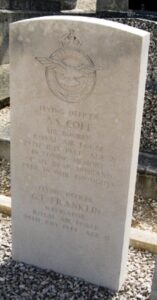
Albert Griffiths, Second Lieutenant, 225687, Royal Army Service Corps. Albert was born at Aldershot on 15 June 1896, the son of Walter Griffiths and Anne Griffiths (nee Crawford). His father had served in the army for many years, then upon retiring in 1903 moved his young family back to his hometown of Lampeter, settling at 8, Greenfield Terrace. Albert left Lampeter as a young man and married Arianwen Richards at Pontypridd in 1923. The couple resided at Norwood, Ynystawe, Swansea by 1939, where Albert worked as a grocery store inspector. He was commissioned Second Lieutenant into the Royal Army Service Corps soon after the outbreak of war and was posted to North Africa. He died there on 26 September 1942. The 46-year-old was buried in Fayid War Cemetery, Egypt.
John Roderick Harries, Flight Lieutenant, 84889, Royal Air Force Volunteer Reserve. John was the son of Roderick Harries, and of Ray Mary Harries, of Cribyn. He was a Clerk in Holy Orders prior to the war, and volunteered to serve in the Royal Air Force. John became a Wireless Operator/ Air Gunner with 77 Squadron, Royal Air Force. He was killed when his aircraft was shot down over Germany on 21 April 1943. John was 33 years old, and is buried at Berlin 1939-1945 War Cemetery, Germany.
Walter John Howes, Flight Lieutenant (Pilot), 127241, Royal Air Force Volunteer Reserve. Walter was the son of Harry and Bessie Howes, of Lampeter. He married Ann Kathleen, of Lampeter in 1943. On 20 October 1942, Walter was commissioned into the Royal Air Force, and posted to No 23 HGCU, Royal Air Force, which was based at RAF Seaford, where he trained as a pilot. Walter was piloting the Short Stirling MkIV serial PW391 on 29 March 1945, when the aircraft developed radio problems, and returned to base. The fault was repaired, and Walter took off on a test flight. He flew the aircraft into some low clouds, when a single seat raining aircraft crashed into it, sending both aircraft plummeting to the ground, killing all of the crew. Walter was 22 years old, and is buried at Lampeter (St. Peter) Churchyard.
Margaret Eleanor Hughes, Aircraftwoman 1st Class, 200338, Women’s Auxiliary Air Force. Margaret was the daughter of David and Rachel Hughes, of Lampeter. She enlisted into the Women’s Auxiliary Air Service, and was posted as a Batwoman at Torquay Hospital. Margaret died on 27 October 1942, aged 21, and is buried at Lampeter (Soar) Independent Chapelyard.
David Basil Jayne, Gunner, 862874, Royal Artillery. David was the son of David Francis and Annie Jayne, of Lampeter. He served with 146 Medium Regiment, Royal Artillery, which was the Cardiganshire Battery, and served with the 7th Armoured Division. The battery fought in North Africa and in the invasion of Sicily and Italy before being recalled to Britain, and took part in the Normandy Landings of June 1944. It then took part in the break-out from the Normandy beach-head, and the subsequent drive through Northern France into Belgium and Holland. David was killed during the fighting around the Reichswald Forest on 15 February 1945. He was 22 years old, and is buried at Mierlo War Cemetery, Netherlands.
David Elwyn Jones, Lance Corporal, 2595146, Royal Corps of Signals. David was the son of David William and Rachel Jones, of Lampeter, and the husband of Maidie Jones. He served with the Royal Corps of Signals, and was attached to the III Indian Corps Signals in Burma. David was killed in Burma on 28 November 1943. He was 30 years old, and is buried at Kanchanaburi War Cemetery, Myanmar.
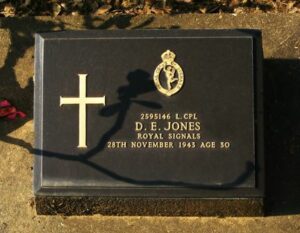
David Stephen Jones, Aircraftman 2nd Class, 1071392, Royal Air Force Volunteer Reserve. David was the son of Stephen and Elizabeth Jones, of Lampeter, and the husband of Marjorie Gwendoline Jones, of Corwen, Merionethshire. He served with 214 Squadron, Royal Air Force, which was a bomber squadron, equipped with the Vickers Wellington. David died on active service in Cardiganshire on 15 March 1941. He was 29 years old, and is buried at Lampeter (St. Peter) Churchyard.
Frederick Wyndham Jones, Sub-Lieutenant (E), Royal Naval Reserve. Frederick was the son of Herbert and Anne Jones, and the husband of Esther Jones, of Lampeter. Frederick served aboard the rescue tug, H.M. Tug Saucy. He was killed when Saucy hit a mine and sank on 4 September 1940. Frederick was 53 years old, and is commemorated on the Liverpool Naval Memorial, England. Frederick is not commemorated at Lampeter.
John Daniel Jones, Gunner, 1075695, Royal Artillery. John was the son of John and Margaret Jones, of Lampeter. He served with 3 Field Regiment, Royal Artillery. John had been taken prisoner of war by the Germans at some time, and was imprisoned in Austria. He died in captivity on 16 December 1944, aged 24, and is buried at Klagenfurt War Cemetery, Austria.
Morgan Geraint Jones, Craftsman, 3971411, Royal Electrical and Mechanical Engineers. Morgan was the son of William and Maria Jones, of Lampeter. He served with the 48 Light Anti Aircraft Regiment Workshops, Royal Electrical and Mechanical Engineers. Morgan died in Malaysia on 19 July 1945. He was 29 years old, and is buried at Labuan War Cemetery, Malaysia.
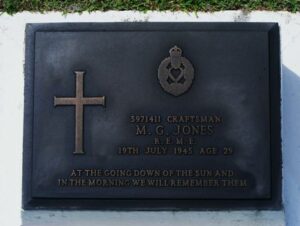
Sidney Roland Jones, Sergeant, 1451041, Royal Air Force Volunteer Reserve. Sidney was the son of William Jones (Butcher) and Sarah Jones, of 5, High Street, Lampeter. Prior to the war he resided with his wife, Ellen Jones, at Liverpool. Sidney served with 612 Squadron, Royal Air Force, which was an RAF Coastal Command unit, and operated the Vickers Wellington. Sidney was killed on a mission on 30 October 1943. He was 29 years old, and is commemorated on the Runnymede Memorial, Surrey.
William David Jones, Fusilier, 1542291, Lancashire Fusiliers. William was the son of Evan and Catherine Jones, of Lampeter, and the husband of Noreen Jones. He had served during the war with the Lancashire Fusiliers. William died on 4 June 1945, aged 29, and is buried at Lampeter (Soar) Independent Chapelyard.
Evan Emlyn Lloyd, Third Radio Officer, Merchant Navy. Evan was the son of David Herbert and Elizabeth Anne Lloyd, of Lampeter. He served with the Merchant Navy aboard the MV Port Victor, a London registered cargo ship. On 30 April 1943, Port Victor was in the Atlantic, when the German submarine U-107 fired two torpedoes at her, causing the ship to shudder to a halt. Another torpedo hit her as the passengers and crew were embarking on to the lifeboats, sending her to the bottom. Twelve crew members, two gunners and five passengers were lost. Evan was one of the dead. He was 21 years old, and is commemorated on the Tower Hill Memorial, London.
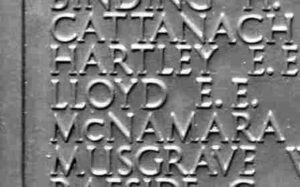
David Albert Lewis Powell, Gunner, 854658, Royal Artillery. David was the son of Thomas Albert and Elizabeth Mary Powell, of Lampeter. He served with 30 Field Regiment, Royal Artillery. The regiment served in the North African campaign, and fought at the famous Battle of El Alamein. David was killed in North Africa on 26 April 1943. He was 28 years old, and is buried at Medjez-El-Bab War Cemetery, Tunisia.
Thomas Stead, Gunner, 826319, Royal Artillery. Thomas served with 7 Medium Regiment, Royal Artillery. The regiment served in the Western Desert. Thomas died in Egypt on 6 January 1942, and is buried at Alexandria (Hadra) War Memorial Cemetery, Egypt.
Thomas Greer Stewart. This man cannot presently be identified.
Reverend David John Thomas, OBE, BA, Chaplain, Royal Navy. David was the son of The Reverend William Dynevor Thomas and Gwenllian Thomas, of Lampeter. After studying for his B.A. at Lampeter, he became a Chaplain with the Royal Navy, and resided with his wife, Mary Irene Thomas, at Northampton. David served at HMS Pembroke. He died at the Royal Naval Auxiliary Hospital Woolston of heart failure and colitis on 23 July 1946, aged 44, and is buried at Northampton (Billing Road) Cemetery.
Evan Thomas. Evan was the son of Thomas and Elizabeth Thomas, of Llwyn, Llanfair. He supposedly died as a Japanese POW in April 1941, aged 35, but cannot presently be identified.
Stanley Herbert Tuck, Gunner, 854834, Royal Artillery. Stanley was the son of Edgar and Alice Tuck, and the husband of Ethel Tuck, of Lampeter. He served with 146 Medium Regiment, Royal Artillery. Stanley fought with his regiment during the Battle of Normandy, and was killed in action there on 13 August 1944. Stanley was 31 years old, and is buried at Bayeux War Cemetery, France.